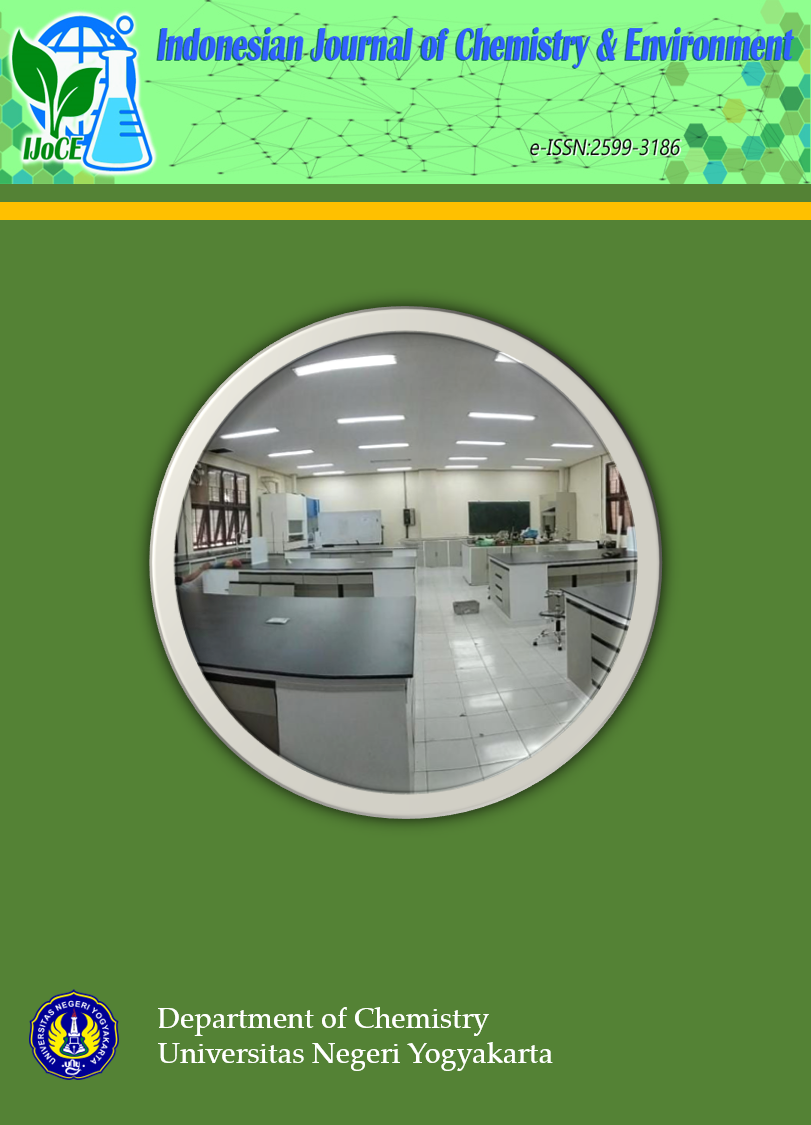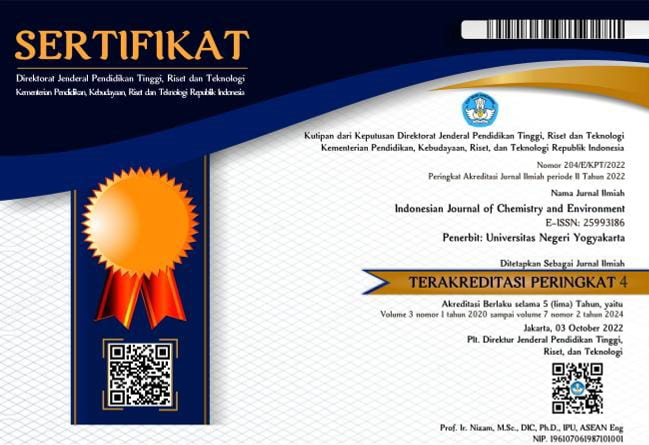Analysis of Caffeine, Total Phenolic Content, and Antioxidant Activity in Liberica Coffee Beans Roasted by Semi-Automatic and Conventional Methods
DOI:
https://doi.org/10.21831/ijoce.v8i1.85978Abstract
This study aims to evaluate the effect of roasting methods on the chemical and functional properties of Liberica coffee, focusing on caffeine content, total phenolic content (TPC), and antioxidant activity. Two roasting approaches were compared: semi-automatic roasting with controlled conditions, and traditional pan roasting with manual heat regulation. Caffeine levels were determined using UV-Vis spectrophotometry at 273 nm, while TPC was measured using the Folin–Ciocalteu method. Antioxidant activity was assessed via DPPH radical scavenging assay. The results revealed that semi-automatic roasting preserved more bioactive compounds, with higher caffeine content (1.86%) and TPC (56.84 mg GAE/g), compared to conventional roasting (1.34% and 41.27 mg GAE/g, respectively). Antioxidant activity was also significantly higher in semi-automatically roasted samples, with 72.3% inhibition and lower IC₅₀ value (168.5 ppm). These findings indicate that semi-automatic roasting enhances both chemical quality and functional potential of Liberica coffee. The study supports the application of controlled roasting technologies in post-harvest processing to improve the health-related value and market competitiveness of Liberica coffee products.
Additional Files
Published
How to Cite
Issue
Section
Citation Check
License
Copyright (c) 2025 Lilla Puji Lestari

This work is licensed under a Creative Commons Attribution-ShareAlike 4.0 International License.
Authors who publish with this journal agree to the following terms:
- Authors retain copyright under a Creative Commons Attribution–ShareAlike License (CC BY SA) that allows others to share: copy, and redistribute the material in any medium or format, Adapt: remix, transform, and build upon the material, for any purpose, even commercially.
- Authors are able to enter into separate, additional contractual arrangements for the non-exclusive distribution of the journal's published version of the work (e.g., post it to an institutional repository or publish it in a book), with an acknowledgement of its initial publication in this journal.
- Authors are permitted and encouraged to post their work online (e.g., in institutional repositories or on their website) prior to and during the submission process, as it can lead to productive exchanges, as well as earlier and greater citation of published work.










